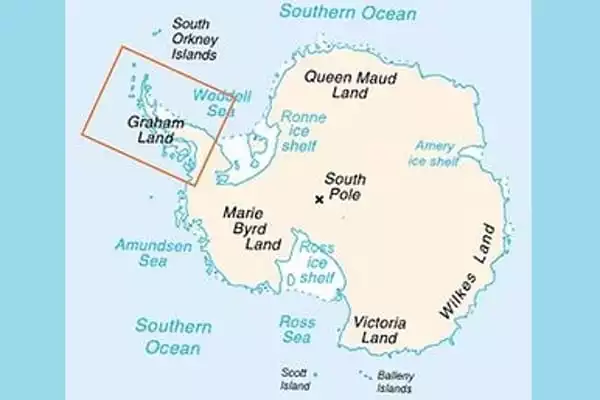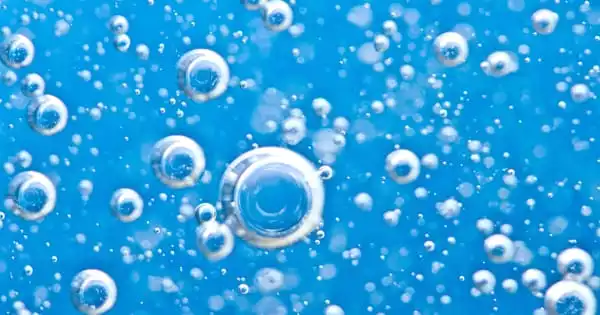Oxygen levels are dropping globally as a result of the use of fossil fuels. The changes are too minor to have an effect on human health, but they are of importance in the research of climate change and carbon dioxide. These charts depict the atmospheric O2 concentration in relation to the level in 1985. The reported declining trend is 19 ‘per meg’ per year. This equates to losing 19 O2 molecules out of every million O2 molecules in the atmosphere per year.
An unknown culprit has been stealing oxygen from our atmosphere for at least 800,000 years, and an examination of air bubbles preserved in Antarctic ice for up to 1.5 million years has indicated the likely suspect.
“We know that atmospheric oxygen levels began to decline significantly in the late Pleistocene, and it appears that glaciers had something to do with that,” said Yuzhen Yan of Rice University, the corresponding author of the geochemical study published in Science Advances. “Around the same period, glaciation expanded and intensified, and the mere presence of glacial grinding causes weathering.”
Weathering refers to the physical and chemical processes that degrade rocks and minerals, with metal oxidation being one of the most important. One example is the corrosion of iron. On iron surfaces exposed to air oxygen, or O2, reddish iron oxide forms quickly.
The reason for the reduction is that the pace of O2 production is lower than the rate of O2 consumption. That is what we mean by the source and sink. The source generates O2, and the sink absorbs or drags on O2. According to the study, the reduction is interpreted as a larger draw on O2, implying that more is being eaten.
Yuzhen Yan
“Weathering that consumes oxygen occurs when fresh crystalline surfaces from the sedimentary reservoir are exposed to O2,” said Yan, a postdoctoral research associate in Rice’s Department of Earth, Environmental, and Planetary Sciences. Another way glaciers could boost atmospheric oxygen consumption is by exposing organic carbon that has been buried for millions of years, according to Yan.
Yan worked on a 2016 study led by Daniel Stolper, now an assistant professor at the University of California, Berkeley, that used air bubbles in ice cores to show the proportion of oxygen in Earth’s atmosphere had declined by about 0.2 percent in the past 800,000 years during his Ph.D. studies in the labs of Princeton University’s Michael Bender and John Higgins.
Yan, Higgins, and colleagues from Oregon State University, the University of Maine, and the University of California, San Diego examined bubbles in older ice cores to indicate that the O2 dip began around 1 million years ago, when the length of Earth’s glacial cycles more than doubled.

The current ice age on Earth began approximately 2.7 million years ago. Several glacial cycles followed. In each, ice caps developed for a while, covering up to a third of the planet, before retreating toward the poles. Each cycle lasted approximately 40,000 years until approximately 1 million years ago. At around the same period when atmospheric oxygen began to diminish, glacial cycles spanning 100,000 years began.
“The reason for the reduction is that the pace of O2 production is lower than the rate of O2 consumption,” Yan explained. “That is what we mean by the source and sink. The source generates O2, and the sink absorbs or drags on O2. According to the study, the reduction is interpreted as a larger draw on O2, implying that more is being eaten.”
Yan claims that the Earth’s biosphere is not contributing to the decline since it is balanced, drawing as much O2 from the atmosphere as it produces. Weathering is the most likely geological mechanism capable of absorbing enough surplus O2 to account for the drop on a global scale, and Yan and colleagues investigated two scenarios for increasing weathering.
When glaciers advance, global sea level falls; when they retreat, it rises. The magnitude of sea-level oscillations more than doubled as the length of glacial cycles more than doubled. Land previously covered by water would have been exposed to the oxidizing power of atmospheric O2 as beaches advanced.
“We ran some calculations to determine how much oxygen that may consume and discovered that it could only account for around a fifth of the observed decline,” Yan explained. Because the extent of ice coverage for each glacial cycle is not precisely known, there is a greater range of uncertainty concerning the magnitude of chemical weathering caused by glacial erosion. However, according to Yan, the evidence implies that it could pull enough oxygen to account for the reduction.
“It’s really difficult to pinpoint on a global basis,” he remarked. “However, we conducted some tests to determine how much additional weathering would be required to account for the O2 reduction, and the results were not outlandish. It might theoretically explain for the enormity of what has been witnessed.”





